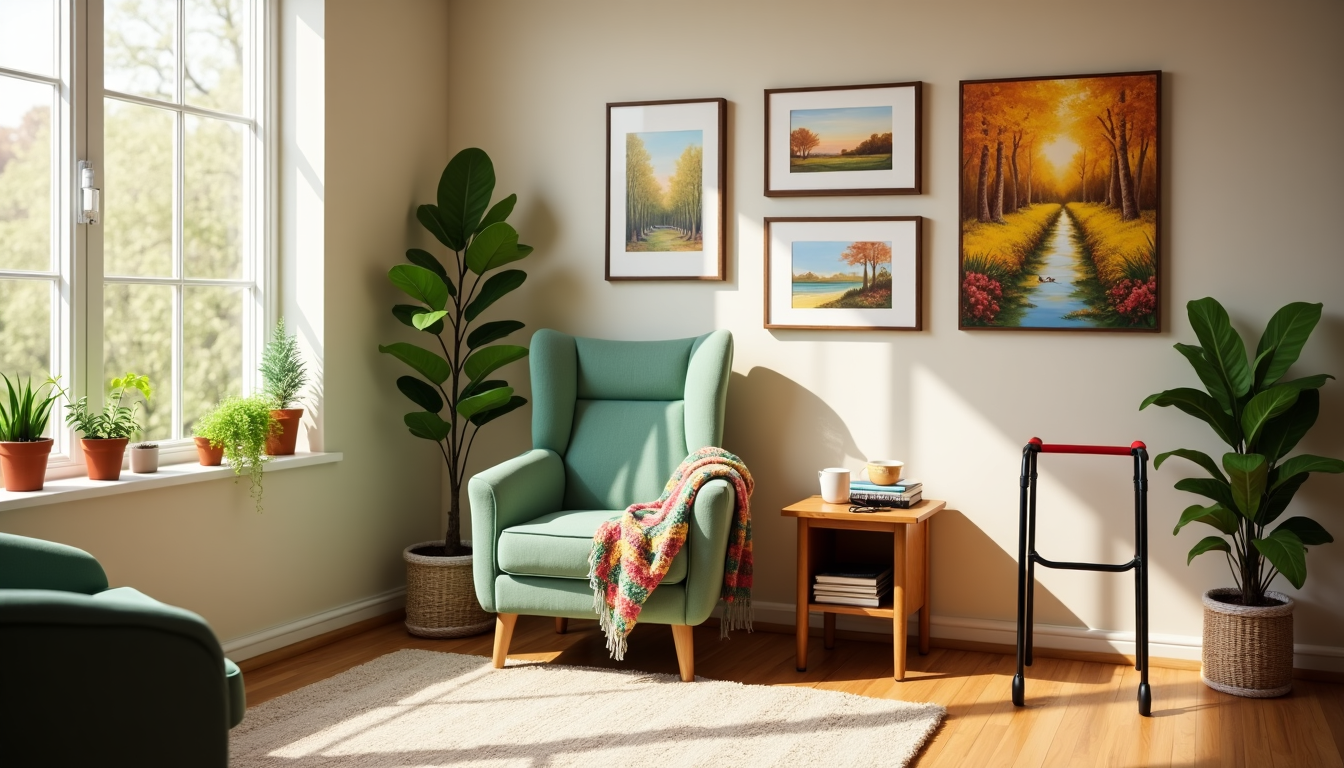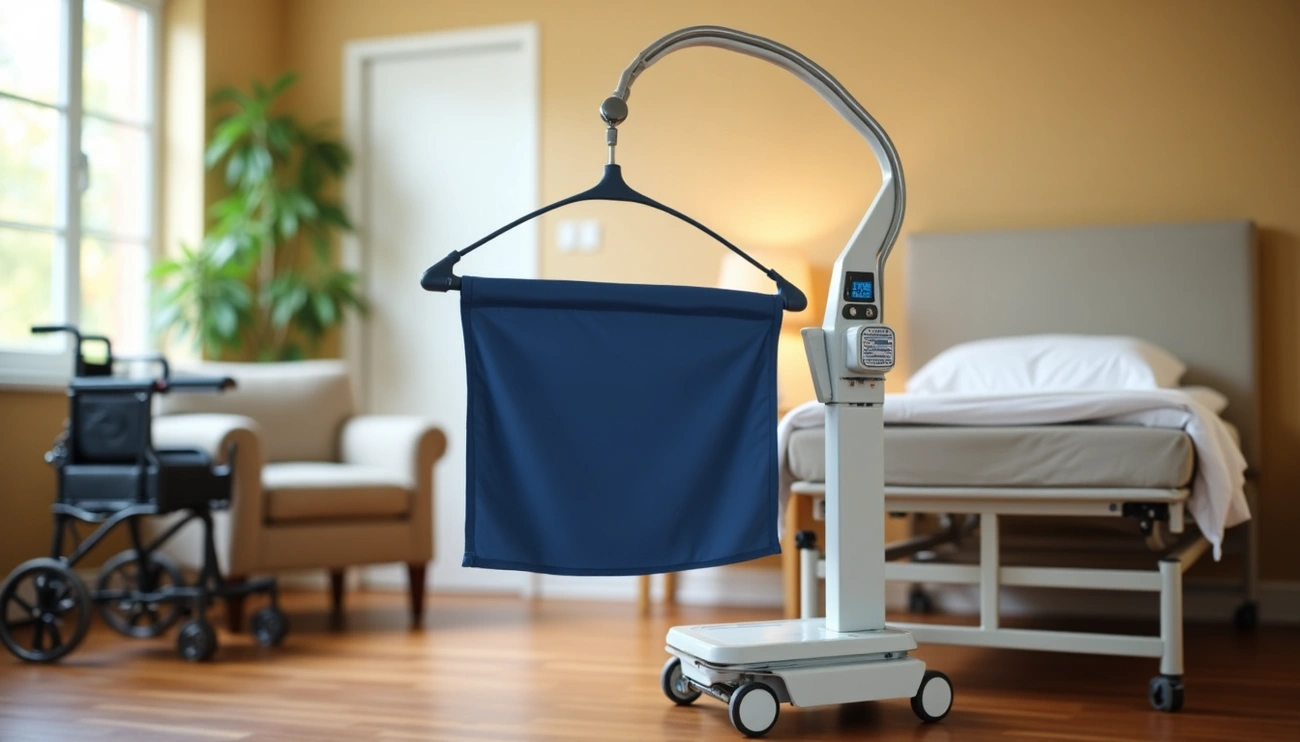The right living spaces for seniors affect their daily comfort, safety and overall well-being. Interior design for senior living needs a balance of function and beauty that meets specific needs while creating a personalized, homely atmosphere. Well-designed senior living spaces reduce accidents by 30% and improve mental well-being by helping seniors stay independent and comfortable.
Senior-friendly interior design covers smart space planning, the right furniture choices, and safety features that work. This piece gets into everything about senior living design. You’ll find details about comfortable seating layouts, proper lighting solutions, meaningful wall decor, and smart storage options. The design also includes air-purifying plants, calming color schemes, and accessibility changes that make daily life easier.
Creating a Comfortable and Functional Layout
Smart senior living space design starts with understanding spatial dynamics and movement patterns. The layout serves as a cornerstone that blends comfort with safety. This thoughtful planning helps seniors traverse their living spaces confidently and comfortably.
Assessing the space and traffic flow
A functional layout starts with evaluating your existing space and establishing clear traffic patterns. A detailed assessment should cover these key areas:
- Measuring doorway widths (minimum 36 inches for wheelchair access)
- Identifying potential bottlenecks in hallways
- Evaluating room transitions
- Determining optimal furniture placement
- Analyzing natural light sources
Choosing multi-functional furniture
Multi-functional furniture plays a significant role that maximizes space utility and maintains esthetic appeal. Smart furniture selection must focus on pieces serving multiple purposes without sacrificing comfort or accessibility. The core team should think over these elements:
- Adjustable-height tables that accommodate both seated and standing activities
- Storage ottomans that provide both seating and organization
- Expandable dining tables for flexible entertaining options
- Chairs with removable arms for easy transfers
Optimizing for accessibility and safety
A safe environment needs both thoughtful layout and safety features. The living space should have clear pathways at least 42 inches wide. Non-slip flooring materials will prevent accidents effectively. Strategic placement of support features will improve independence naturally.
Motion-sensor lights will give a clear view in key areas, especially during the night. Handrails installed along corridors and bathrooms offer extra support. The space between furniture pieces should fit mobility devices comfortably. Sturdy seating placed at regular intervals creates perfect rest spots that make daily activities easier.
Different flooring materials need smooth connections to prevent people from tripping. Smart design solutions make safer passages for walker and wheelchair users by tapering subsurfaces below finish floors. This creates seamless transitions between materials.
Personalizing with Color and Decor
Thoughtful color choices and personal touches revolutionize senior living spaces. These design elements turn clinical settings into cozy, welcoming homes. Design choices’ psychological effects help create spaces that balance comfort with functionality.
Selecting a harmonious color palette
Colors substantially impact mood and behavior in senior living spaces. Your color scheme should balance visual appeal with practical functionality. Smart color choices can transform any living space. Here are the essential color effects to think over:
- Soft blues and greens promote tranquility and relaxation
- Warm yellows create optimistic, positive environments
- Neutral hues provide perfect backgrounds for personal items
- High-contrast colors help you with navigation and depth perception
- Muted tones help reduce overstimulation
Incorporating meaningful personal items
Personal belongings create emotional connections and promote a sense of belonging in senior living spaces. Vintage finds and treasured antiques add character and depth while preserving vital connections to memories. Creative repurposing gives familiar items new life – teapots become planters and vintage baskets transform into storage solutions that keep their sentimental value intact.
Adding artwork and photos
Art installations and photo displays improve the visual environment and provide cognitive stimulation. Gallery-style hanging systems offer flexible, damage-free display options that you can update easily. Several factors matter in artwork selection:
Family photos and artwork should be displayed at eye level to ensure the best viewing experience. Memory care areas need simple, representational art with calming colors that helps residents feel secure and at ease. Dedicated gallery spaces in corridors serve as engaging destinations where residents and visitors can interact and share stories.
Art displays add a personal touch to living spaces and create meaningful conversation points throughout the community. Gallery events become social hubs that promote connections between residents, families, and caregivers while celebrating creative expression.
Enhancing Comfort and Safety
Safety and comfort are the life-blood of senior living design, and research suggests proper implementation reduces fall risks by up to 30%. Specialized furniture, lighting, and safety features create an environment that supports independence while ensuring protection.
Selecting ergonomic and supportive furniture
Ergonomic furniture design is a vital part of comfort and health protection. Your chairs and sofas need the right firmness and back support that lets you move easily between sitting and standing. These features make seating perfect for seniors:
| Feature | Requirement | Benefit |
|---|---|---|
| Seat Height | 18-20 inches | Easier standing transition |
| Arm Support | Full-length | Enhanced stability |
| Backrest | Adjustable angle | Proper posture support |
| Pressure Management | Multi-density foam | Prevention of pressure points |
Implementing proper lighting
Good lighting greatly affects safety and well-being in senior living spaces. Studies prove that the right amount of light reduces fall risks and helps maintain natural sleep patterns. The lighting setup needs:
- Focused lights that help with reading and detailed work
- Pathway lights that turn on with movement for safe nighttime walking
- Systems that copy natural daylight to support sleep cycles
- Light controls that adjust brightness for comfort
Installing safety features
Detailed safety features will give both independence and protection. Strategic placement of grab bars near seating areas and bathrooms provides significant support to improve mobility. Non-slip floors with proper texture reduce fall risks, and emergency response systems provide quick help at the time you need it.
Smart home technology creates a protective environment through remote monitoring and automated safety responses. Motion sensors, automated lighting controls, and emergency alert systems enhance safety without affecting the living space’s esthetic appeal.
Incorporating Nature and Sensory Elements
Sensory stimulation creates engaging and therapeutic environments that benefit seniors. Natural elements and sensory experiences boost cognitive function by a lot. These elements reduce anxiety and promote overall well-being in senior living spaces.
Adding indoor plants
Air-purifying plants enhance senior living environments and create visual interest while improving air quality. These low-maintenance options work well especially when you have specific care requirements:
| Plant Type | Benefits | Care Level |
|---|---|---|
| Pothos | Air purification, low light tolerant | Very Easy |
| Spider Plant | Non-toxic, adaptable | Easy |
| Chinese Evergreen | Humidity resistant, durable | Easy |
| Boston Fern | Non-toxic, air-cleaning | Moderate |
Using calming sounds and scents
Sound therapy helps seniors sleep better and feel less anxious in their living spaces. Sound programs that play soothing tones work well to improve:
- Daytime alertness
- Overall sleep quality
- Cognitive function
- Behavioral symptoms
- Stress reduction
Natural scents through aromatherapy offer gentle stress relief with essential oils and diffusers. Seniors feel more relaxed and sleep better with familiar scents like lavender, chamomile, and peppermint. These scents also boost memory. Staff can easily add these therapeutic benefits to residents’ daily routines with simple items like linen sprays, diffusers, or scented candles.
Incorporating tactile elements
Tactile wall panels and interactive surfaces create stimulating environments that awaken the senses and support cognitive function. These three-dimensional surfaces use textured fabrics and sensory-friendly materials. They offer therapeutic benefits through:
- Better spatial awareness
- Refined motor skills
- Higher cognitive involvement
- Stronger emotional regulation
Different textures and surfaces throughout living spaces create opportunities for meaningful interaction. These elements support physical and cognitive well-being effectively. The careful placement of these features in common areas and corridors encourages people to move around and interact socially. This approach results in a more vibrant living environment.
Conclusion
Senior living space design requires a delicate balance between practical needs and personal expression. A strategic layout plan, safety features, and ergonomic furniture create the foundations for independent living. Colors, meaningful decorations, and natural elements help turn these spaces into genuine homes. These design elements reduce accident risks and promote comfort through tailored environments that honor residents’ priorities and requirements.
Expertly designed senior living spaces revolutionize residents’ daily life quality and independence. Smart lighting choices, textures, and sensory elements enhance cognitive function and emotional stability. Safety features provide peace of mind without style compromise. These design principles show how smart interior decisions create environments where seniors flourish. They retain their dignity and independence in spaces that reflect their unique personalities and life stories.
FAQs
Q: How can I decorate a room to accommodate the needs of an elderly person?
A: To make a bedroom senior-friendly, start by removing any clutter to minimize tripping hazards and create a more open space. Arrange the furniture to ensure easy mobility and choose a bed that is accessible. Opt for accessible storage options, non-slip flooring, adequate lighting, and install safety rails and grab bars. Ensure that controls for various room functions are easy to reach.
Q: What are essential features in designing a home for aging in place?
A: When designing a home suitable for aging in place, consider single-level layouts to avoid stairs, ensure wheelchair accessibility, especially in bathrooms, and include features like pull-out and pull-down shelving. Incorporate multi-level counters, remote-controlled blinds and windows, slip-resistant surfaces, twist-free faucets, lever door handles, and an open floor plan for easier navigation and access.
Q: What are some design tips for a large living room?
A: For a large living room, consider incorporating built-in shelves and a large sofa to anchor the space. A prominent houseplant can add life to the room, and dividing the room into different areas can help manage the space better. Highlight architectural features like fireplaces, and use sconces and large floor lamps for lighting. A sofa table can add functionality, and floor-to-ceiling windows with treatments enhance the overall esthetics and natural light.
Q: How do you achieve a timeless look in interior design?
A: To create a timeless interior design, focus on classic silhouettes and avoid overly trendy shapes. Choose patterns that are subtle and timeless, and invest in high-quality materials that convey durability and style. Opt for color schemes that have lasting appeal, incorporate a variety of textures to add depth and interest, and design with a timeless perspective in mind. Lastly, infuse the space with elements that reflect your personal passion and style.












